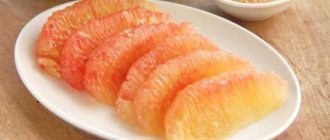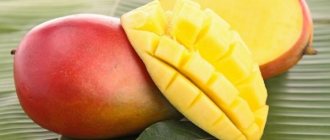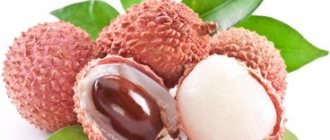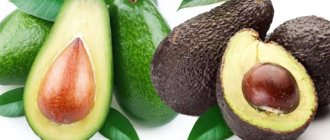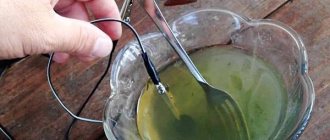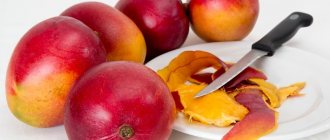| Benefits How to eat Contraindications Growing How to choose |
Thai mango fruit has a rich, amazing, special taste. It contains notes of peach, raspberry, pineapple, melon and apricot, and some even detect a slight taste of pine! It has a unique aroma and is a storehouse of useful vitamins and minerals that have a beneficial effect on our body. The largest exporter of the exotic fruit is India, but Thailand, one of the three main suppliers of mangoes, grows the most delicious and aromatic fruits in the world. According to the criterion of the best varieties and their total quantity, the country occupies a leading position. One has only to try the honey Chok Anan or the Nam Dok Mai and Mahachanok bred here, and any doubts will instantly disappear!
Photo: © ArtistLens (Pixabay Free License)
The peculiarity of Thai mangoes lies in their unusually juicy, smooth and silky pulp with virtually no fibers, an amazing, literally enveloping aroma and delicious taste. But this can only be said about fruits purchased in Thailand itself, and not on the shelves of our supermarkets. And all because the most delicious mango is the fruit that ripened on the tree, and not in the store.
Mango fruit
Where does it grow
Mango grows in tropical countries, and India is considered the birthplace of this evergreen tree, which bears large, tasty fruits. On Indian lands, mangoes still thrive today, basking in the rays of the hot sun. It also grows in Pakistan, Egypt, Indonesia, and Thailand.
In total, there are up to 30 species of this fruit in nature.
What a taste
Mango has an interesting taste - a mix of peach and pineapple, flavored with carrot sweetness. This combination is fascinating, you want to try it again and again. It is not surprising that mango has many admirers far beyond its tropical homeland.
The fruits come in red-green and yellow colors. Color has little effect on the taste of the fruit if we are talking about ripe fruit.
What it looks like: photo
Mango trees are very tall, up to forty meters. True, cultivated species are smaller in height, but they bear much more fruit. The fruits themselves are large, individual specimens reach two kilograms. Medium-sized mangoes weigh about half a kilo. The leaves of the trees are dense, long, up to half a meter in length.
Young trees show off in pink and orange – this is the color of the foliage. As the tree matures, the leaves change from pink to red and then turn green. During the flowering period, the trees are covered with yellow or white flowers; this sight cannot leave you indifferent. Small flowers form powerful clusters, each cluster is almost half a meter long.
Growing mangoes at home
Mature trees can reach heights of up to 35–40 meters and have a 10-meter crown. Their root system goes deep to 5–6 meters, and they can bear fruit for up to 300 years. Of course, such giants and long-lived people are unlikely to find a place in a garden plot, much less in a pot, but they managed to tame mangoes for growing at home. By the way, evergreen mango trees grow in open areas in the warm tropics and subtropics, but not in our climate.
How to grow mango from seed
Seeds are obtained from ripe and even overripe, soft fruits. It is quite easy to germinate them; the probability of a positive result is more than 90%.
The seed must be carefully removed from the shaggy coat, treated with a manganese solution or fungicides (protects it from fungus), wrapped in a napkin moistened with water or sent to a container with wet sawdust and kept in a warm place until the sprout hatches (7–14 days). Or you can immediately plant the seed in “universal” soil (pH 7), purchased at the nearest flower shop.
Photo: © Thamizhpparithi Maari
Mango in a pot
The first pot for the future plant can be a large plastic cup. It will need to be placed under a “24-hour” phytolamp. In summer, it is allowed to use a window without additional lighting, but the sprout will develop more slowly. It is recommended to cover the top of the glass with film, but lift it daily for ventilation. The watering mode is selected individually - the soil should not dry out or flood.
When the young plant gets stronger, it should be transplanted into another pot - quite spacious and deep, with drainage holes. You will need to lay drainage at the bottom - about 5 cm of crushed stone, broken brick, crushed foam or expanded clay.
Important! It is recommended to plant mango seeds with the sprout facing down.
How to germinate mangoes from seeds: video
It is recommended to place the pot with the plant in a warm, bright place, but without direct exposure to sunlight. In summer, it can be taken out onto the balcony, open terrace and even into the yard, but only for a day, since temperature changes are dangerous for southern mangoes. Watering - approximately once every 2-3 days, and the leaves should be sprayed with a spray bottle or wiped with a damp cloth. The tree needs to start feeding at one year of age every two weeks in spring and summer. To prevent the mango from growing and starting to bush, its top must be pinched when it reaches a meter in height.
It is necessary to transplant the plant into a larger container if it feels cramped in the old pot. Signs may include roots appearing in the drainage holes or a significant slowdown in the rate of development.
Fruits at home
Many housewives would dream of growing fruit on their windowsill or at least in a warm loggia. But even with good care, this is impossible in our latitudes. Mango at home can only be considered as an ornamental plant. It will probably delight you with flowers after 5–10 years, although gardeners assure that the plant is successfully grafted, and if conditions permit, then with proper luck, fruits will appear.
Photo: © David Stanley (CC BY 2.0)
Benefits of fruit
Mango is an amazing gift of nature. It contains many useful substances, vitamins, and minerals.
So, it contains a lot of ascorbic acid, which, as everyone knows, increases the level of immunity of the body. A lot of beta-carotene, which is responsible for the vitality of the body. There are many vitamins B and E, without which the normal functioning of many organs is impossible. Potassium and magnesium contained in mangoes support the functioning of the heart and blood vessels, phosphorus is responsible for bone health. The fruits contain many useful amino acids and sugars synthesized in the body. There are phenolic compounds, polyphenols, which act as antioxidants and protect cells from damage, and are also responsible for blood quality.
Mango helps with:
- Hypertension;
- Painful menstruation;
- Diseases of the nail plates;
- Obesity;
- Anemia.
The fruit is recommended to be used:
- For active brain function;
- As protection against cancer;
- For weight loss;
- To remove excess cholesterol from the body;
- To support male strength;
- To reduce pain during physical training;
- To maintain the health of pregnant women and the fetus.
Mangoes can also be eaten by nursing mothers, unless, of course, the taste of the fruit is new, if the woman enjoyed it before pregnancy. However, you need to eat it in small portions so as not to cause an allergic reaction in the baby.
Children can eat mangoes, but not earlier than two years of age. The best option is mashed puree.
Chemical composition and calorie content
Nutritional value per 100 g of mango pulp (Mangifera indica):
- Calories: 70 cal.
- Carbohydrates: 17 g
- Dietary fiber: 1.8 g
- Fat: 0.27 g
- Protein: 0.5 g
| Vitamins and minerals | Quantity | % of daily value |
| Folates | 14 mcg | 3,5 |
| Niacin | 0.584 mg | 3,5 |
| Pantothenic acid | 0.160 mg | 1 |
| Pyridoxine | 0.134 mg | 10 |
| Riboflavin | 0.057 mg | 4 |
| Thiamine | 0.058 mg | 5 |
| Vitamin A | 765 ME | 25,5 |
| Vitamin C | 27.7 mg | 46 |
| Vitamin E | 1.12 mg | 7,5 |
| Vitamin K | 4.2 mcg | 3,5 |
| Potassium | 156 mg | 3 |
| Calcium | 10 mg | 1 |
| Copper | 0.110 mg | 12 |
| Iron | 0.13 mg | 1,5 |
| Magnesium | 9 mg | 2 |
| Manganese | 0.027 mg | 1 |
| Beta carotene | 445 mcg | — |
| Alpha carotene | 17 mcg | — |
Mango fruits are rich in prebiotic dietary fiber, vitamins, minerals and polyphenolic antioxidants. The fruit contains:
- Flavonoids and carotenoids (beta-carotene and alpha-carotene) – these compounds have antioxidant properties and are essential for good vision.
- Vitamin A is needed to maintain healthy mucous membranes and skin, as well as for normal vision, beautiful skin, reproductive health and normal cell development.
- Potassium is an important component of cellular fluids that helps control heart rate and blood pressure.
- Vitamin C is essential for the normal functioning of the immune system, strong connective tissue and healthy blood vessel walls.
- Vitamin B-6 (pyridoxine) – controls homocysteine levels in the blood, is beneficial for blood vessels, prevents coronary artery disease and reduces the risk of stroke.
- Copper is necessary for the production of red blood cells.
Mango peel is also beneficial for the body, it is rich in phytonutrients responsible for its vibrant color, in particular carotenoids and polyphenols.
Contraindications
Mango, despite its usefulness, should be excluded from the diet for people who suffer from allergic reactions. Quincke's edema due to a tasty fruit is an unpleasant “surprise”.
It is dangerous to eat green fruits; they contain too much ascorbic acid. This may cause stomach cramps.
It is not recommended to eat a lot of mangoes. The maximum is a couple of fruits per day, otherwise the functioning of the digestive system can be disrupted. In addition, you need to remember that the fruit is prohibited from being consumed with alcoholic beverages; this fruit significantly slows down the breakdown of ethyl alcohol.
You should be careful and not feast on exotic fruit if you have kidney problems or liver disease.
Cutting a mango into pieces
If you need to make juice, puree, etc. from mango, there is no need to stand on ceremony, you can just cut it as convenient. Here, of course, aesthetics will suffer, so if you want to get beautiful pieces of fruit, you need to know how to cut a mango correctly.
After buying a fruit, many people think about how to cut a mango. There is nothing difficult about this; after all, once upon a time they cut a watermelon. This principle can be used for such exotic things, for this:
- Two deep cuts are made at an angle from each other to obtain a slice.
- The slice is carefully trimmed and separated from the stone.
- The same manipulations are done with the remaining slices of fruit.
When the pulp is peeled and pitted, in addition to slices, you can cut it into cubes, strips, diamonds, or whatever your imagination allows. The cutting method will not affect the taste of the fruit in any way, but it is still better to consider what it is used for. So, adding it to a fruit salad means cutting it into cubes or just small pieces so that it’s easy to stick on a fork. To simply eat with your hands, it will be enough to cut the fruit into slices or, without making cuts, eat with a spoon. To grind with a blender, just divide the fruit into a couple of parts. But if mango is being prepared for a festive table, it is better to follow all the rules in order to surprise your guests.
Cutting mangoes into cubes and diamonds is popular. It is suitable for any fruit, regardless of its degree of ripeness, but, of course, it is better to use ripe fruit for the table.
To do this, place the mango in a vertical position, always on a flat surface, and with a sharp knife, cut the slice along the seed, about 1/3 of the thickness. The same actions must be done on the other side of the fruit. As a result of this, you will get three slices, one of which will have a bone. The skin is removed from this part, and the flesh around the bone is cut off. Next, take the remaining two slices and place them with the flesh facing up, after which cuts are made in the form of a lattice with a knife, for this purpose they are drawn lengthwise and crosswise. In this case, you need to try not to damage the skin.
But that's not all. Then you need to gently press on the skin, still holding it down, as if turning the slice inside out. This way, the cut cubes will be on the outside, which makes them easier to cut with a knife.
By serving the fruit in this form, you will undoubtedly surprise all your guests and household members.
How to choose ripe
On store shelves you can find two types of mangoes - yellow and greenish-red. To choose a ripe fruit, you need to pay attention to the color of the fruit and its density.
It’s easy to choose a yellow fruit: the richer the color, the more ripe the fruit.
If green-red fruits are sold, then, based on color, you can make a mistake and buy unripe fruit. Therefore, you need to take the fruit in your hand and squeeze it slightly. The fruit should regain its shape after squeezing. A good fruit should not leave a dent.
If the fruit is not squeezed at all, then it is unripe and should not be taken. But if you want to buy fruit, it is better to let it ripen. And not in a cold place! In the refrigerator, the mango will remain unripe. It is better to wrap the fruit in paper and leave it for several days.
Botanical characteristics
Today there are over 2,000 different varieties of mangoes. They are conventionally divided into 2 types: Indo-Chinese (greenish and elongated fruit), Indian (orange-yellow and round). In addition, intervarietal hybrids are known - Indo-Chinese.
The most popular crops suitable for growing in a small garden or in a container on the balcony include the following crops:
- Cogshall;
- "Carrie"
- "Fairchild"
- "Ice Cream";
- "Julie"
- Lancettila;
- "Brooks";
- Mallika;
- "Okrung"
- "Neelum"
The weight of a ripe mango fruit is 200 - 300 grams, and the diameter depends on the plant variety and varies from 10 to 20 centimeters. The fruit tastes vaguely like a peach. The color of the skin depends on the variety and can be yellow-green, deep orange, pink, red, purple.
Mango is an evergreen tree of the tropics that reaches 20 meters in height. This is one of the most durable fruit species. The number of flowers in inflorescences reaches up to 4000 pieces. However, their binding rate is extremely low. A maximum of 2 fruits ripen in one inflorescence.
If the fruit is excessively sour, it is spoiled; if it is tasteless, it is unripe. Ripe fresh mango is sweet, fleshy and juicy, smooth to the touch, elastic with a shiny surface. The presence of dents, defects, or damage indicates that the product has begun to deteriorate.
Small black spots, on the contrary, indicate the ripeness of the fruit.
Wrinkled skin is a sign of stale fruit. If the surface of the mango is wet, then the juice is seeping out. This indicates that the fruit is damaged internally.
When pressed, the peel of a ripe mango springs back and crushes under your fingers. After light pressure, it should restore its original shape. The smell of fresh ripe fruits is sweetish, resinous, coniferous, and is strongly manifested at the stalk. If the mango does not smell, it means it is not yet ripe; it exudes an intense aroma - it is overripe.
The shape of the mango depends on the type of tree and can be elongated-ovoid, spherical, pear-shaped, ovoid. In the center of the fruit there is an inedible, large and heavy seed, 10 centimeters long and weighing 50 grams. The outside of the bone is covered with a protective shell.
Do I need to peel it?
Mango is a great dessert. It can be eaten raw by cutting off the crust, or it can be used as an ingredient in dishes. Salads, appetizers, main courses with meat and fish are prepared with it, subjecting the fruits to heat treatment. Juice from the fruit is good. Culinary masterpieces with mangoes also have their fans.
Before cooking, wash the fruit and remove the crust. The pulp is chopped. If the fruit is hard, you can cut it into pieces. If it is soft, then in order to remove the pulp, you can take an ordinary spoon and scrape the pulp from the walls of the peel.
Why are mangoes eaten without the peel? It's all about its hardness and toxic composition. The peel protects the pulp from external factors, and this is its main purpose. But the peel should not be eaten. It contains the toxic resin urushiol, which is hazardous to health. Even a small amount of peel eaten can cause stomach and intestinal disorders.
Urushiol may also cause an allergic reaction. Some people, especially those prone to allergies, will easily get sick even if they touch mango peel. Redness and blisters appear on the skin, like a nettle burn. Such people need to be extremely careful when feasting on exotic fruit.
Classic recipes with mango
Tropical panna cotta
Ingredients:
- heavy cream - 250 milliliters;
- water – 25 milliliters;
- mango - 1 piece;
- sugar – 50 grams;
- milk – 250 milliliters;
- leaf gelatin;
- vanilla;
- pistachios.
Cooking method:
- Peel the mango (using gloves), grind in a blender. Pour the finished puree into portioned bowls and place in the refrigerator to harden.
- Place leaf gelatin in cold water, following the proportions on the package. Add sugar, vanilla, cream into a heavy-bottomed saucepan, bring to a boil, stir until the crystals dissolve.
- Add milk, bring until smooth.
- Cool the cream mixture to room temperature, stirring occasionally to prevent foam from forming. After this, pour it into bowls on top of a layer of mango puree.
- Place the milk and fruit dessert in the refrigerator for 2 hours.
- When serving, garnish the panna cotta with ground pistachios and mango slices.
Mango salad with shrimp
Ingredients:
- cucumbers – 3 pieces;
- lettuce leaves - 10 pieces;
- mango - 1 piece;
- chopped dill – 20 grams;
- shrimp – 400 grams;
- grainy mustard – 45 grams;
- white wine vinegar - 30 milliliters;
- mayonnaise – 75 grams;
- sugar – 30 grams;
- salt;
- pepper.
Cooking principle:
- Boil, cool, peel the shrimp.
- Wash the cucumbers, peel the mangoes, cut into cubes.
- Combine sugar and vinegar, stir until completely dissolved. Add mustard and mayonnaise to the resulting sauce.
- Mix cucumbers, mangoes, shrimps, pour dressing.
Serve in portions on lettuce leaves.
Mango sorbet
Ingredients:
- sugar – 120 grams;
- starch – 15 grams;
- mango – 2 pieces;
- water – 50 milliliters;
- juice of half a lemon;
- juice of one orange.
Cooking technology:
- Peel the mango, puree the fruit pulp, and place in the refrigerator.
- Mix citrus juice, add sugar, bring to a boil.
- Pre-stir the starch in water, pour into the orange-lemon syrup, heat until thick. Refrigerate.
- Mix mango puree with citrus mixture until smooth. Place in molds and place in refrigerator or ice cream maker to harden. Serve chilled.
Alcoholic cocktail “Mango daiquiri”
Ingredients:
- sugar syrup – 15 milliliters;
- lemon juice – 30 milliliters;
- mango – 0.5 pieces;
- ice – 50 grams;
- rum – 50 milliliters;
- mango juice – 30 milliliters.
Cooking method:
- Peel the mango.
- Beat the fruit pulp and remaining ingredients in a blender.
- Serve the resulting cocktail in a Margarita glass.
How to eat properly
Gourmets advise eating mangoes raw to better enjoy the taste. To do this, the fruit is peeled and cut. To remove the crust, you need to make cuts on the fruit, deepening the knife and dividing it into several parts, the middle of which has a pit. Cut off the peel.
You can use another option when the mango is divided into three parts, with a seed in the middle part. Using a knife, make longitudinal cuts in each part of the lobe, and then take out the pulp with a spoon, leaving the peel.
Mangoes are eaten in small pieces. You can put the pieces in a salad to prepare a dessert, or you can bake or stew them with vegetables, fruits, meat, and fish. The fruit is also used to make jam, marmalade, and other delicious sweets.
How to properly peel a mango before eating?
The difficulty in peeling mangoes lies in the presence of a large oblong seed, which is difficult to separate from the pulp.
- Before use, the pulp must be freed from the skin. It is necessary to wash the fruit thoroughly, because the journey it took was very long.
- It is recommended to wash fruits with soda. For long-distance transportation, fruits are treated with wax. Dry the fruit with a paper towel. Mostly here you can find oval and oblong mangoes; it is more convenient to cut them by placing them vertically on a board, and it is best to use a plate, because if the fruit is juicy, then all the juice will flow out during the cutting process.
The first method is suitable if you eat mangoes outdoors in the absence of a knife. This method is not very good, because you will get dirty.
If you decide to eat mango, then this is the cleaning method for you:
- Pick up the fruit with the root facing you.
- Cut off the tip and open it like you would open a banana.
- Holding it by the peel, eat the flesh right down to the pit.
It is better to put mango in the refrigerator before eating. Cut it along the growth of the bone in a circle into halves. Turn the flesh out and scoop out the pulp.
Peeling the mango
Another way to cut a mango:
- Cut the mango into 2 slices to remove the pit.
- Using a knife, without catching the skin, make cubes.
- Turn the flesh out.
You can also remove the peel using a potato peeler and then cut it into slices or cubes.
- If you decide to treat your guests to this juicy fruit, it is better to choose a cutting method in which you will not get dirty or stain everything around, and the pieces will be neatly cut.
- It is better to store peeled mangoes in a cool place, but store whole mangoes in a dark place at room temperature. If the fruit is slightly overripe and very soft, eat it with a spoon, cutting it in half.
It is better for children to prepare puree, but not using a blender; there is a more original way. Take a ripe mango in your hands and gently press until it becomes pureed. Be careful not to damage the outer shell. To eat the pulp, simply make a small cut and squeeze a little bit of the pulp into your baby's mouth.
puree
can be consumed either in its pure form or as an addition to desserts, snacks or main courses. It is best to eat mango as an independent product, because it has a bright taste on its own. It is recommended to use a knife and fork when cutting it into slices or cubes. True, not everyone follows the rules of etiquette outside restaurants and cafes.
During the hot season, you can make sorbet from mangoes. Be careful, because the fruit is sweet like honey and has a bright yellow color; if it gets on your clothes, it can ruin it. Mango can also be added to desserts by pureeing it using a blender and served with ice cream.
Mango is one of the components of sauces, the most famous in Latin America is “salsa”. Mango is one of the ingredients in Asian curry sauce. It is also a great addition to main dishes as a side dish called chutney. We are used to adding mangoes to salads, but only to fruit salads. In Asia, this is a great addition to salads with shrimp and seafood. It is used to make yoghurts, smoothies, and eaten with cream cheese. Mango is a great addition to pies. You can make delicious preserves, jams, and candied fruits from it.
How and how long can you store
Typically, mangoes transported from India to other countries are picked from the tree while still green. On the way to the market, the fruit ripens little by little. And yet you rarely see ripe specimens on store shelves. Such semi-ripe fruit must lie down before it is eaten. Unripe fruit is usually placed in a place with plenty of light. Let there be a ripe red apple next to the green fruit, so the mango will ripen faster. After five days the fruit can be eaten.
You need to keep the fruits in the refrigerator if you want to preserve them longer. In the cold, mangoes may not spoil for a month. However, you need to remember that it loses its taste over time.
How to eat pitahaya fruit
Beneficial features
The exotic fruit has long been used in Asian medicine to treat cholera and plague. Today, the fruits of the mango tree are used as a hemostatic, diuretic, and antioxidant agent. In addition, they are used to eliminate heartburn and treat acute dermatitis.
In order to cleanse the body of toxins and lose weight, mangoes are consumed with milk. A successful combination of proteins and sugars gives a feeling of satiety, lightness and creates an optimal balance of these compounds in the body.
Ripe, aromatic, sweet fruits with a slight sourness are eaten. When purchasing green fruit, leave it in a dark, warm place to allow it to mature. If a mango is placed in the refrigerator, the fruit will soften and lose its taste and beneficial properties.
The effect of Asian apple on the human body:
- improves vision;
- normalizes digestion, fights heartburn;
- strengthens the immune system;
- protects against sunstroke;
- supports brain function;
- relieves pain;
- restores strength;
- reduces fever;
- relieves inflammation, is used to treat gum diseases (periodontal disease, stomatitis);
- improves mood;
- normalizes sleep;
- increases stress resistance, relieves tension;
- strengthens blood vessels, heart;
- normalizes metabolism;
- prevents the growth of malignant neoplasms of the colon, stomach, mammary, prostate, and pancreas;
- improves bile flow;
- relieves fatigue;
- increases sexual activity;
- thins mucus;
- reduces the manifestations of varicose veins;
- cleanses the intestinal walls of harmful substances.
Mangoes are of particular value to women during pregnancy and lactation. The exotic fruit softens the symptoms of toxicosis, maintains normal hemoglobin levels, and relieves heartburn and constipation.
Mango fruits help restore the female body after childbirth.
During breastfeeding, the fruit is consumed with caution, observing the baby's reaction to the product. If the baby refuses to take milk, is capricious, or redness appears on his body, exclude mangoes from the diet of the young mother. From 8 months, introduce the fruit into your child’s menu in the form of puree or freshly squeezed juice.
To avoid bloating, the fruit is given in small doses (5 grams) at first, then the amount is gradually increased.
To relieve heart pain, hold a piece of mango on the tip of the tongue for 6–7 minutes, and to strengthen the walls of blood vessels, drink a decoction of dried leaves. Traditional healers in India use the seeds of the fruit to treat asthma, the juice of the fruit treats acute dermatitis, and with a mixture of Asian apple pulp, honey and pepper, they remove toxins from the liver and improve the flow of bile.
Unripe mango fruits dried in the sun contain up to 50 milligrams of vitamin C (per 100 grams) and are an indispensable remedy for the prevention of winter hypovitaminosis.
Use of fruit in folk medicine
Traditional healers use mangoes to prepare useful potions that help with many diseases. So, a decoction is prepared from the leaves, which becomes indispensable in the treatment of diabetes. Patients with heart disease, varicose veins, and stomach diseases receive the same decoction. The drug is used as a diuretic and a blood clotting agent.
Mango juice is used to treat dermatitis and other skin diseases. Fresh juice is also a good prevention of atherosclerosis.
Mango seasonings help get rid of heartburn, and the seeds of this amazing plant help with asthma.
Healers use not only the fruits and leaves, but also the bark. Healers infuse the bark and use the resulting drug to treat diabetes and varicose veins. Sometimes decoctions are prepared from both bark and leaves.
Seafood soup
Mangoes can be used to make cold soups.
The dishes are very rich and easy to prepare.
Composition of ingredients
To prepare the dish you will need:
- 200 g boiled shrimp;
- 1 tsp. Ginger;
- 2-3 cloves of garlic;
- 1 bunch of shallots;
- 2 mangos;
- 200 ml coconut milk;
- 2-3 g curry;
- 1 tbsp. l. lime juice.
You can also add cilantro to the dish if you wish.
Step-by-step cooking process
The step-by-step process for preparing the product is simple:
- First you need to peel the mango and cut it in a convenient way.
- The garlic must be peeled and rinsed under running water.
- All ingredients must be placed in a blender bowl, or in a bowl suitable for use with an immersion blender (except for boiled shrimp).
- The products must be thoroughly chopped, spices and salt added to taste.
The resulting mass must be poured into portioned containers and garnished with boiled shrimp.
How to serve a dish
The prepared meal must be served cold. If desired, you can decorate the resulting product with cilantro leaves, basil and mint, fresh vegetables and fruits, and nuts.
Fruit ripening calendar
In tropical countries where mango grows, the hot season for ripening and harvesting usually occurs in the spring months. So, in Thailand the fruit ripens in March and April. This applies to early varieties. Late varieties appear closer to the summer months. In Egypt, the harvest is harvested from the second summer month to September inclusive. In the Dominican Republic, fruits begin to be harvested in May, in Hurghada - in August. The fruiting period in Indonesia is from late autumn to January.
Typically, mangoes take about five months to ripen.
What is a mango?
It is a tropical fruit from the stone fruit family with an oval or round shape. It is similar in size to a grapefruit. The shade of the peel of different varieties can range from green to yellow, orange or red. In the middle there is yellow flesh and a large seed.
Mango grows in warm climates. Its homeland is South Asia. Recently, the fruit has been grown in the USA, Mexico and the Caribbean.
It is one of the most consumed exotic foods, earning it the nickname “king of fruits.”
Reviews
- I love mangoes! This is a taste that cannot be compared with anything. The main thing is to choose a good fruit so that the seed, again, is not too huge. I usually cut it into several pieces, and then use a mesh to chop the pulp into small pieces. I like to eat just mangoes, I don’t put them in salads.
Tamara, Surgut
– I was advised to eat mangoes to lower cholesterol. I was wary of the exotic product. But I liked the taste and started adding it to the porridge. A month later, tests showed that my cholesterol levels had decreased!
Victoria, Krasnoyarsk
– And I used the mango diet when I urgently needed to lose weight. By the way, a slice of fruit easily discourages the desire to eat sweets or chocolate.
Olga, Saratov
– My wife loves mango juice, she makes it herself, and we bought a juicer for this purpose. It should be noted that the fruit really improves immunity. All my friends got sick more than once in the winter, but my wife and I would at least sneeze. This is what fresh vitamins mean.
Alexey, Ufa
– I bought it, I didn’t like it. No, the fruit itself seems to be normal, but I am allergic to the peel. Covered with hives. I don't eat anymore.
Vladimir, Tula
“And I’m allergic to mangoes.” And for the whole fruit, both the peel and the pulp. Severe allergies, they even called an ambulance. Now I never buy mangoes.
Oksana, Nevyansk
The king of fruits, as the mango is sometimes called, will bring a lot of benefits to the body if you eat it in moderation and take only ripe fruits. Then you can see with your own eyes that the skin will become smoother and as if it will begin to glow from the inside, vigor will appear, and the body will gain more strength to resist infections.
Health to you and your loved ones! Natalya Belokopytova.
What are the benefits and harms of mangoes for the body?
When you enjoy delicious and juicy mangoes, you hardly think about what health benefits it has and whether there is any harm.
This fruit contains a large amount of vitamins, minerals and antioxidants, which is why its impressive properties are manifested.
However, mangoes contain more sugar than many other fruits. It is best to limit the amount and eat no more than 330 grams per day (that's about two small fruits).
The fructose in mangoes differs from processed sugar in that it is supplemented with fiber and a variety of nutrients for the body, making it more beneficial than harmful.
Health Benefits
Mango will help protect and strengthen the body due to its high content of fiber, vitamins and minerals. Here are some of its beneficial properties:
- Promotes eye health. The antioxidant zeaxanthin, found in mangoes, filters out harmful blue light rays and prevents macular degeneration. Mango fruits are rich in beta-carotene, which helps improve vision and overall eye health and even prevents age-related macular degeneration.
- Increases immunity. A medium-sized mango contains up to two-thirds of the recommended daily intake of vitamin C. A powerful antioxidant, it strengthens the immune system and prevents colds and flu.
- Improves digestion. Mango pulp contains prebiotic dietary fiber, which helps feed the good bacteria in your gut.
- Reduces cholesterol levels. The high pectin content of mangoes reduces levels of low-density lipoprotein (LDL or “bad” cholesterol), which causes plaque in blood vessels and blocks blood flow.
- Supports heart health. Mango contains magnesium and potassium, which support a healthy heart rate and relax blood vessels, helping to lower blood pressure.
- Promotes brain health. The iron in mangoes promotes normal brain function, while vitamin B6 supports cognitive development.
For diabetes
Mangoes can be eaten even if you have type 2 diabetes. Yes, it is sweet and should be eaten with caution, but this does not make it a prohibited food for diabetics.
The glycemic index of mangoes ranges from 41 to 60, with an average of 51. A value of 51 is on the lower end of the glycemic index scale. Low glycemic foods are considered to be less than 55, which is safe for diabetics.
Such products provide a slow release of sugar into the blood and do not cause a sharp jump in blood glucose.
Mango peel has anti-diabetic properties. The pulp is rich in dietary fiber, which again helps regulate blood sugar levels.
However, due to the fructose in its composition, people with diabetes are not recommended to consume more than one mango (weighing about 150 g) daily.
When losing weight
Since mangoes contain many vitamins, essential nutrients and are 80% water, eating one fruit will help you feel fuller for longer.
Half a cup of chopped mango contains only 50 calories. They can replace any high-calorie snacks.
Since the fruit is filled with fiber, it boosts digestive function and burns unwanted calories. This helps to lose excess weight.
During pregnancy
Mangoes are good for women to eat during pregnancy as they fulfill iron deficiency.
The fruit is also rich in vitamins A, C and B6, which are beneficial for pregnant women.
Exotic fruit appearance, shape, weight
Mango is a rather weighty exotic fruit with an ovoid shape. On one side it is slightly narrower, and on the other it is wider. Depending on the variety, mangoes can be green, orange, yellow or even red.
One such fruit weighs approximately 200-250 g. There are known types of mangoes whose size does not exceed the fruit of a plum tree. Specimens weighing 400-500 grams are much less common. And very rare are giants, weighing about 1.5 kg. This is such an unusual mango fruit. It is difficult to say whether it is possible to eat the peel from such a huge fruit, since such specimens were discovered only a few times in life. One can only assume that they were treated exactly the same as regular-sized fruits.
Cooking Tips for Mango Lovers
This fruit is not just tasty, but also very healthy. Its pulp contains a huge amount of amino acids, fiber, pectin, flavonoids, unsaturated fatty acids and vitamins E, A, D and B. Moreover, mango is a low-calorie product. After all, 100 g of it contains about 66 calories. Therefore, it can be safely added to any diet.
Mangoes are usually eaten raw. It can be safely added to smoothies or fruit cocktails. Pieces of the fruit go well with yogurt and milk. Sometimes mangoes are added to salads. Here it should be combined with avocado, pineapple and chicken. The pulp of the fruit is also used in sweet desserts and pizza.
As you can see, this is a very interesting and healthy fruit.
Should you eat it?
Mango peel is edible and rich in important nutrients and powerful plant compounds.
However, you may wonder if the potential benefits outweigh the disadvantages described above, such as a tough texture, bitter taste, and potential pesticide residues or allergic reactions.
In truth, the nutrients present in mango peel are also found in many other fruits and vegetables, so there is no need to endure the unpleasant taste of mango peel to reap the potential health benefits.
Summary:
Eating plenty of fruits and vegetables can provide your body with the same nutrients and provide similar benefits as eating mango peel.

